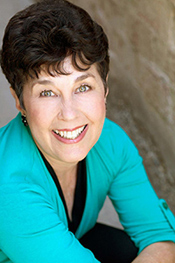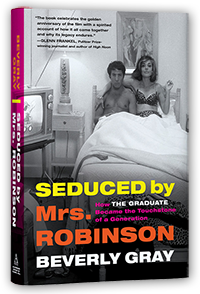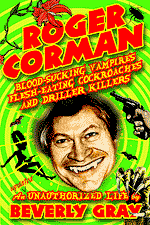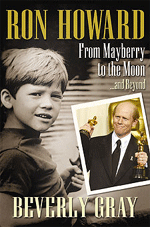I’ve been doing a lot of flying lately. Which of course has made me contemplate the role played by air travel in the movies of the past—and the present. Back in the 1930s, the glamour of flight was highlighted in films both fluffy and serious. In the former category, there’s 1931’s Flying Down to Rio, the story of a dashing aviator who romances a Brazilian beauty. (The film marked the screen debut of the dance team of Fred Astaire and Ginger Rogers, whose fleet-footed “Carioca” number shot them to stardom.) In 1939, Howard Hawks directed Only Angels Have Wings, a drama about flyboys who risk their lives to carry air freight out of a remote South American trading port.
War movies, of course, encouraged the notion of flyers as heroes. One of the most gripping air dramas to come out of World War II is Twelve O’Clock High (1949), about a bomber squadron and the new leader (Gregory Peck) who must whip his men into shape, then agonize over their survival. Twelve O’Clock High earned praise for its use of actual combat footage, as well as its honest treatment of what was then called “battle fatigue.” (Today, we know it as post-traumatic stress disorder.) Made by men who’d actually faced combat, Twelve O’Clock High stands out for its refusal to accept a glibly optimistic Hollywood ending.
In the post-war period, when air travel had become more commonplace for the average American, a commercial airplane flight proved to be an effective backdrop for an all-star melodrama. Such was 1954’s The High and the Mighty (with John Wayne et al), and the formula worked again in 1970’s Airport, in which such potential disasters as a bomber aboard a flight and an airport shut down by a snowstorm kept audiences on the edge of their seats. Ten years later Jim Abrahams and the Zucker brothers (along with my old pal Jon Davison) had audiences falling out of their seats with laughter when they launched Airplane!, a wicked spoof that still hits its mark. (Says the invaluable IMDB, “An airplane crew takes ill. Surely the only person capable of landing the plane is an ex-pilot afraid to fly. But don't call him Shirley.”)
For some of us, air travel now seems less romantic—and much less funny—than perhaps it once did. Back in 1967, Dustin Hoffman descending through the smog and then riding a moving sidewalk at LAX seemed an appropriate emblem of the dehumanized world into which The Graduate plunged its central character, home from college and about to re-enter his parents’ world. In 2009’s Up in the Air, George Clooney is so cut off from humanity that he’s happiest on a plane, racking up perks, frequent flyer miles, and the occasional meaningless amorous conquest.
It’s axiomatic that when airlines screen films, they avoid anything suggesting an air disaster. I rarely watch movies on planes, but on one long international flight, I was pleased to see that KLM was screening Fred Astaire-Ginger Rogers musicals. The one I caught was the rare Astaire-Rogers picture based on a true-life romance, The Story of Vernon and Irene Castle. How surprised I was, high above the Atlantic in the wee hours of the morning, to catch the scene where Irene learns what just happened to Vernon’s plane. Ooops.
Do wish me bon voyage.








I have all four of the AIRPORT movies and when time permits, I plan to watch them back to back. I've been holding off watching them for that purpose. I've only seen the one with Christopher Lee from start to finish. I believe that's AIRPORT 75? AIRPLANE is a riot and I was shocked to later learn that AIRPLANE 2 wasn't a Zucker Bros. picture. It had their style down perfectly and it was several years before I paid attention that it wasn't one of their productions.
ReplyDeleteSpeaking of disaster movies, it's amazing how those films changed over the years from WHEN WORLDS COLLIDE (1951) on down and the differences between American disaster pictures and those from Japan in reference to societal breakdown.
I saw a Fred Astaire/Rogers doc not long ago and I must admit I'm a bit interested in checking these movies out at some point as well as Gene Kelly's movies. Those guys and girls back then could really move almost gliding on air at times.
Ah yes, it's hard not to love Astaire and Rogers -- my favorite is Swing Time. Growing up, though, I definitely favored the much more macho Gene Kelly, a prejudice I inherited from my parents. You just can't beat Singin' in the Rain. I used to adore An American in Paris, especially the big ballet at the end, until my kids really made fun of it. (Still, what a fascinating idea -- to make impressionist art come to life in dance.)
ReplyDeleteI kind of like flying, and I kind of don't like flying. They sit on a seesaw and go back and forth for dominance. I love the Airport movies - have that same box set - and of course Airplane is amazing. I really enjoyed Up in the Air - thought that was a terrific character study, well acted by Mr. Clooney.
ReplyDeleteI agree with you about "Up in the Air," though I think the latter half of the film gets off the track (to mix a metaphor, I guess). It's interesting to compare the screenplay to the original novel, which has a rather different central character and is much less interesting. By the way, one of the producers of "Airplane" is yet another Roger Corman alumnus, my old buddy Jon Davison. He went on to do "Robocop."
Delete